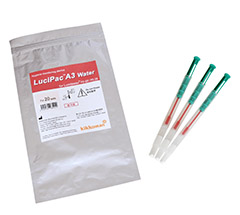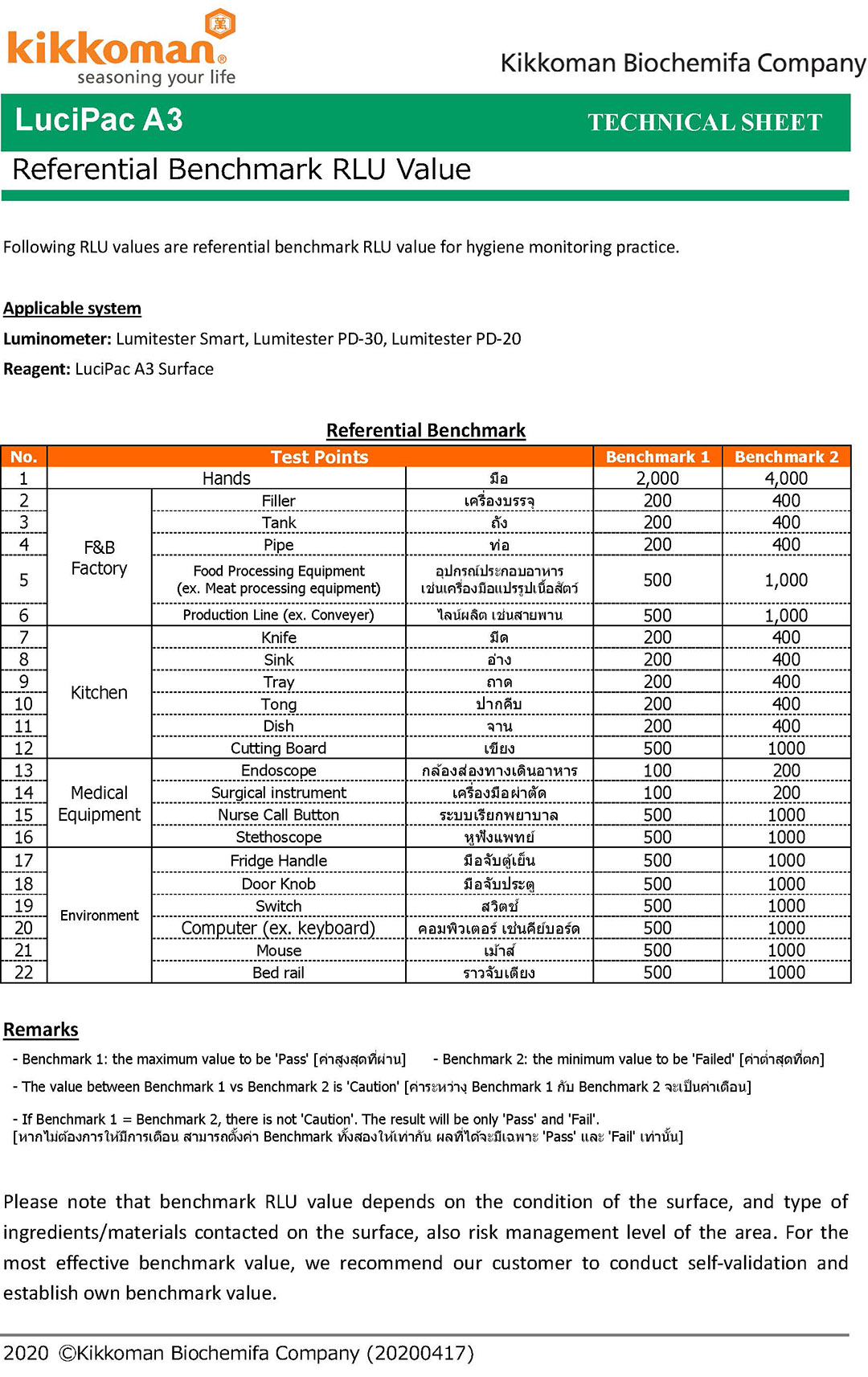Products
LuciPac A3 Water


ATP is a source of energy necessary for various forms of life that are present in organic residues, such as microorganisms, food residue, and biological substances that originate from other living organisms. This ATP monitoring system allows you to measure and detect organic residues at high speed and high sensitivity by detecting ATP using luciferase, which is why it is widely used in determining cleanliness levels in food manufacturing site and medical treatment facilities. However, conventional ATP monitoring system is insufficient because ADP and AMP generated from ATP degradation are completely overlooked. Kikkoman succeeded in developing a new ATP+ADP+AMP monitoring system. This method definitely enables high sensitive analyses of a wider range of organic residues.

Measurement Methods
Make sure to always run measurement tests at the same temperature to maintain repeatability from comparison, if the temperature compensation is not used. Get the LuciPac out of the refrigerator, and wait until they have reached room temperature. Use the swab devices as soon as possible once they have returned to room temperature
Measurement procedures
1. Remove the sampling stick from the main body (casing)
2. Soak sampling stick about 3 cm from the tip of the sampling stick into water or other liquid samples, and shake it gently. Make sure any bubble do not remain in the comb of the sampling stick.
3. Pull out the sampling stick slowly and straight up from the sample.
4. Return the sampling wab stick to the the main body (casing) and push it all the way into the main body (casing)
5. Hold the LuciPac casing firmly and shake it.
6. Allow the leftover luminescent reagent it thoroughly dissolve.
7. Insert the LuciPac into the Lumitester to measure the results.




